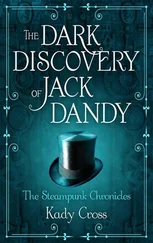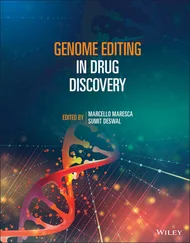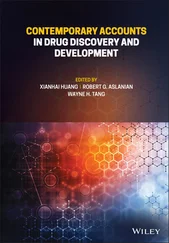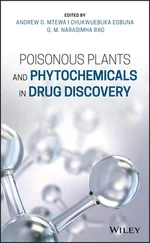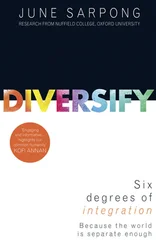59 59 (a) Furstner, A., Mathes, C., and Grela, K. (2001). Concise total syntheses of epothilone A and C based on alkyne metathesis. Chem. Commun.: 1057–1059.(b) Furstner, A., Mathes, C., and Lehmann, C.W. (2001). Alkyne metathesis: development of a novel molybdenum‐based catalyst system and its application to the total synthesis of epothilone A and C. Chem‐Eur. J. 7: 5299–5317.
60 60 Schinzer, D., Limberg, A., Bauer, A. et al. (1997). Total synthesis of (−)‐epothilone A. Angew. Chem. Int. Ed. 36: 523–524.
61 61 Bode, J.W. and Carreira, E.M. (2001). Stereoselective syntheses of epothilones A and B via directed nitrile oxide cycloaddition1. J. Am. Chem. Soc. 123: 3611–3612.
62 62 Mulzer, J., Mantoulidis, A., and Öhler, E. (2000). Total syntheses of epothilones B and D. J. Org. Chem. 65: 7456–7467.
63 63 Lee, F.Y.F., Borzilleri, R., Fairchild, C.R. et al. (2008). Preclinical discovery of ixabepilone, a highly active antineoplastic agent. Cancer Chemother. Pharmacol. 63: 157–166.
64 64 (a) Hirata, Y. and Uemura, D. (1986). Halichondrins – antitumor polyether macrolides from a marine sponge. Pure Appl. Chem. 58: 701–710.(b) Uemura, D., Takahashi, K., Yamamoto, T. et al. (1985). Norhalichondrin‐A – an antitumor polyether macrolide from a marine sponge. J. Am. Chem. Soc. 107: 4796–4798.
65 65 Hart, J.B., Lill, R.E., Hickford, S.J.H. et al. (2000). The halichondrins: chemistry, biology, supply and delivery. In: Drugs from the Sea (ed. N. Fusetani), 134–153. Basel: Karger.
66 66 Aicher, T.D., Buszek, K.R., Fang, F.G. et al. (1992). Total synthesis of halichondrin‐B and norhalichondrin‐B. J. Am. Chem. Soc. 114: 3162–3164.
67 67 (a) Bauer, A. (2016). Synthesis of Heterocycles in Contemporary Medicinal Chemistry (ed. Z. Časar), 209–270. Cham: Springer International Publishing.(b) Jackson, K.L., Henderson, J.A., and Phillips, A.J. (2009). The halichondrins and E7389. Chem. Rev. 109: 3044–3079.
68 68 (a) Cortes, J., O'Shaughnessy, J., Loesch, D. et al. (2011). Eribulin monotherapy versus treatment of physician's choice in patients with metastatic breast cancer (EMBRACE): a phase 3 open‐label randomised study. Lancet 377: 914–923.(b) Cortes, J., Twelves, C., Wanders, J. et al. (2011). Clinical response to eribulin in patients with metastatic breast cancer is independent of time to first metastatic event. EMBRACE study group. Breast 20: S48–S49.
69 69 (a) Kim, D.S., Dong, C.G., Kim, J.T. et al. (2009). New syntheses of E7389 C14‐C35 and halichondrin C14‐C38 building blocks: double‐inversion approach. J. Am. Chem. Soc. 131: 15636–15641.(b) Dong, C.G., Henderson, J.A., Kaburagi, Y. et al. (2009). New syntheses of E7389 C14‐C35 and halichondrin C14‐C38 building blocks: reductive cyclization and oxy‐Michael cyclization approaches. J. Am. Chem. Soc. 131: 15642–15646.(c) Yang, Y.R., Kim, D.S., and Kishi, Y. (2009). Second generation synthesis of C27‐C35 building block of E7389, a synthetic halichondrin analogue. Org. Lett. 11: 4516–4519.
70 70 (a) Yu, M.J., Zheng, W.J., and Seletsky, B.M. (2013). From micrograms to grams: scale‐up synthesis of eribulin mesylate. Nat. Prod. Rep. 30: 1158–1164.(b) Austad, B.C., Calkins, T.L., Chase, C.E. et al. (2013). Commercial manufacture of Halaven (R): chemoselective transformations en route to structurally complex macrocyclic ketones (vol 24, pg 333, 2013). Synlett 24, E3‐E3.(c) Fukuyama, T., Chiba, H., Kuroda, H. et al. (2016). Application of continuous flow for DIBAL‐H reduction and n‐BuLi mediated coupling reaction in the synthesis of eribulin mesylate. Org. Process Res. Dev. 20: 503–509.(d) Fukuyama, T., Chiba, H., Takigawa, T. et al. (2016). Application of a rotor stator high‐shear system for Cr/Mn‐mediated reactions in eribulin mesylate synthesis. Org. Process Res. Dev. 20: 100–104.
71 71 Kawano, S., Ito, K., Yahata, K. et al. (2019). A landmark in drug discovery based on complex natural product synthesis. Sci. Rep. 9: 8656.
72 72 Levesque, F. and Seeberger, P.H. (2012). Continuous‐flow synthesis of the anti‐malaria drug artemisinin. Angew. Chem. Int. Ed. 51: 1706–1709.
73 73 (a) Chang, Z.Y. (2016). The discovery of Qinghaosu (artemisinin) as an effective anti‐malaria drug: a unique China story. Sci. China Life Sci. 59: 81–88.(b) Tu, Y.Y. (2011). The discovery of artemisinin (qinghaosu) and gifts from Chinese medicine. Nat. Med. 17: 1217–1220.(c) Wang, M.Y. (2016). Publication process involving the discovery of artemisinin (qinghaosu) before 1985. Asian Pac. J. Trop. Biomed. 6: 461–467.(d) Jianfang, Z. and Arnold, K.M. (2013). A Detailed Chronological Record of Project 523 and the Discovery and Development of Qinghaosu (Artemisinin). Strategic Book Publishing and Rights Company.
74 74 Gilmore, K., Kopetzki, D., Lee, J.W. et al. (2014). Continuous synthesis of artemisinin‐derived medicines. Chem. Commun. 50: 12652–12655.
75 75 Turconi, J., Griolet, F., Guevel, R. et al. (2014). Semisynthetic artemisinin, the chemical path to industrial production. Org. Process Res. Dev. 18: 417–422.
76 76 Hanada, M., Sugawara, K., Kaneta, K. et al. (1992). Epoxomicin, a new antitumor agent of microbial origin. J. Antibiot. 45: 1746–1752.
77 77 Sin, N., Kim, K.B., Elofsson, M. et al. (1999). Total synthesis of the potent proteasome inhibitor epoxomicin: a useful tool for understanding proteasome biology. Bioorg. Med. Chem. Lett. 9: 2283–2288.
78 78 Meng, L., Mohan, R., Kwok, B.H.B. et al. (1999). Epoxomicin, a potent and selective proteasome inhibitor, exhibits in vivo antiinflammatory activity. Proc. Natl. Acad. Sci. U. S. A. 96: 10403–10408.
79 79 Myung, J., Kim, K.B., and Crews, C.M. (2001). The ubiquitin‐proteasome pathway and proteasome inhibitors. Med. Res. Rev. 21: 245–273.
80 80 Groll, M., Kim, K.B., Kairies, N. et al. (2000). Crystal structure of epoxomicin: 20S proteasome reveals a molecular basis for selectivity of alpha',beta'‐epoxyketone proteasome inhibitors. J. Am. Chem. Soc. 122: 1237–1238.
81 81 Elofsson, M., Splittgerber, U., Myung, J. et al. (1999). Towards subunit‐specific proteasome inhibitors: synthesis and evaluation of peptide α',β'‐epoxyketones. Chem. Biol. 6: 811–822.
82 82 Rosenfeld, L. (2002). Insulin: discovery and controversy. Clin. Chem. 48: 2270–2288.
83 83 Beals, J.M. (2005). Successful Drug Discovery, vol. 1, 35–60. Weinheim: Wiley‐VCH.
84 84 Banting, F.G., Best, C.H., Collip, J.B. et al. (1922). Pancreatic extracts in the treatment of diabetes mellitus. Can. Med. Assoc. J. 12: 141–146.
85 85 Zuelzer, G. (1908). Ueber Versuche einer specifischen Fermenttherapie des Diabetes. Zeitschrift f. exp. Pathologie u. Therapie 5: 307–318.
86 86 Scott, E.L. (1912). On the influence of intravenous injections of an extract of the pancreas on experimental pancreatic diabetes. Am. J. Physiol. 29: 306–310.
87 87 Ionescu‐Tirgoviste, C. and Buda, O. (2017). Nicolae Constantin Paulescu. The First Explicit Description of the Internal Secretion of the Pancreas. Acta Med. Hist. Adriat. 15: 303–322.
88 88 Kohler, G. and Milstein, C. (1975). Continuous cultures of fused cells secreting antibody of predefined specificity. Nature 256: 495–497.
89 89 Stashenko, P., Nadler, L.M., Hardy, R., and Schlossman, S.F. (1980). Characterization of a human B lymphocyte‐specific antigen. J. Immunol. 125: 1678–1685.
90 90 Tedder, T.F., Streuli, M., Schlossman, S.F., and Saito, H. (1988). Isolation and structure of a cDNA encoding the B1 (CD20) cell‐surface antigen of human B lymphocytes. Proc. Natl. Acad. Sci. U. S. A. 85: 208–212.
91 91 Nadler, L.M., Stashenko, P., Hardy, R. et al. (1980). Serotherapy of a patient with a monoclonal‐antibody directed against a human lymphoma‐associated antigen. Cancer Res. 40: 3147–3154.
Читать дальше


